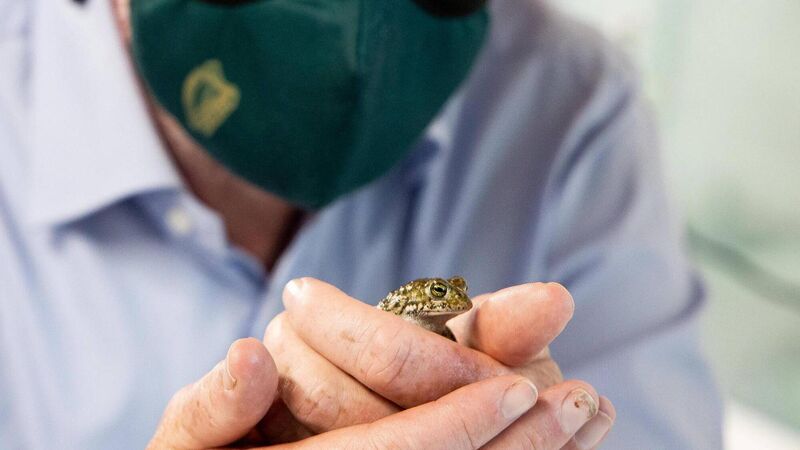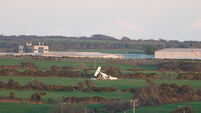Fota-bred endangered natterjack toadlets released into the wild in Kerry

500 toadlets were released into the wild in Co Kerry. Picture: Michael O'Sullivan /OSM
For the first time in Ireland, hundreds of captive-bred natterjack toadlets have been released into the wild in Castlegregory, Co Kerry, with the help of locals.
The species became endangered in the early 20th century due to land reclamation and changes to agricultural practices in the coastal areas of Castlemaine Harbour and Castlegregory.
Estimates put the remaining population at fewer than 10,000 individuals in the wild, as natterjack toads are now protected under the EU’s Habitats Directive.
A project aiming to conserve and boost the number of natterjacks in Ireland, run by the National Parks and Wildlife Service (NPWS) and Fota Wildlife Park, has seen 6,000 toadlets released to date — but this is the first time they have been bred in captivity.
On Monday, 500 toadlets were released into the wild in Co Kerry.
Captive rearing plays an important role in the conservation of this unique and endangered amphibian and, through these efforts, more than 6,000 individuals have been successfully released into the wild to date.
Natterjacks endure natural mortality rates as high as 90%, with large numbers of eggs and tadpoles typically lost every summer due to predators and ponds drying out. This year has been a particularly challenging year for the toads, with the dry spring and summer meaning spawning in the wild was very limited.
To protect the toadlets, staff from NPWS collected toad spawn and tadpoles from ponds in the wild and transported them to Fota, where they are looked after in special holding tanks over the summer months.
This year, mature natterjacks being held at Fota produced spawn, marking the first time toadlets have been bred in captivity, giving a timely boost to efforts to save the species.
Malcolm Noonan, Minister of State at the Department of Heritage, heralded the project as a “fantastic example of scientists, conservationists and communities coming together to protect this rare amphibian and the habitat it depends on”.
Mr Noonan also said he was delighted that, under a new scheme, local farmers will be paid to manage their lands in a way that aids the conservation of the species.
Dr Ferdia Marnell, the amphibian specialist who oversees the project with NWPS, explained that natterjacks are a “boom or bust species” which can be affected by ponds drying up early in the year.
“This year was not one of the good ones. The captive rearing ensures that some eggs do make it through to toadlets every year and that is particularly important in dry years like this,” she said.













